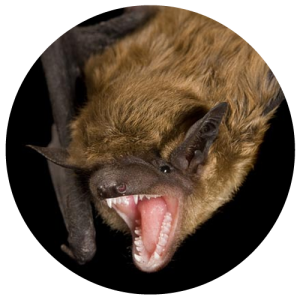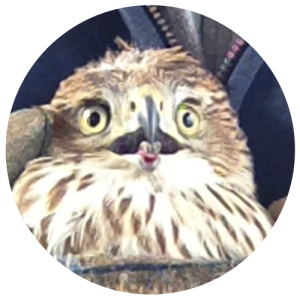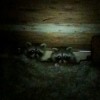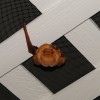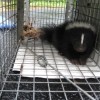Bats
Even little brown bats look gigantic when they fly around the inside of your house scaring you half to death as you make your way to the bathroom at 2AM!
Although there are other kinds of bats in the northern VA area, the big brown bat and little brown bat are the ones most likely to take up residence in your home.
Since they are a protected species (and beneficial to the ecosystem) the best option is not to trap, but repair all potential entry points and set up a one-way exit. Bats find their way home by urinating and deficating on the way in and out, leaving their scent to mark the way. Most of the time their main entrance can be found just by the droppings on the ground or on the wall around the entrance as well as the grease mark left by their bodies as they squeeze into the house.
Beavers

The beaver is the largest North American rodent. Beavers can engineer amazing dams in a very short amount of time, turning small creeks into huge pondscreating a new habitat that is shared and enjoyed by many other amimals such as ducks and geese, muskrats, mink and otter.
Almost all trees felled by beavers fall toward the water. During the summer, beavers eat the bark of the newly felled trees as well as low hanging green branches. Once the bark is eaten, the branch is used on the dam or lodge. These branches, having cured over time, will last for a very long time and make excellent walking sticks.
Despite it’s appearance, the dam is not the beaver’s home, the lodge is. The lodge is either a hole dug into the bank surrounded with a mound of mud and sticks at a deeper part of the newly built pond, or simply a mud hut built in the middle of their pond. If you look hard, you may see a large area of thin branches sticking out of the water near the lodge. Besides continually repairing and improving the dam, beavers spend lots of time later in the fall taking uneaten, fresh branches and “planting” them near the lodge. This is their food source for the winter. If the pond freezes over, the beaver simply swims under the ice to retrieve a few twigs, then swims back to the lodge to enjoy his meal.
Birds
Birds often build nests in dryer, oven and bathroom exhaust vents. Even the slatted vent covers that open with the airflow of the fan don’t slow many small birds down. They simply grab the bottom of the vent with their feet, then use their beak to push the cover open.
Once they begin building their nest, the nesting material builds up and keeps the cover open. When the babies are starting to explore, they sometimes go the wrong way in the vent pipe and end up dropping into an area that they can’t escape, such as over the microwave. The only way to get them out then is to remove the microwave.
Chipmunks

Chipmunks are industrious, ground-dwelling squirrels. They normally don’t cause any damage to a house, but will take advantage of a free, easy meal of spilled bird seed (and sometimes potted bulbs) and will try to move into any place he can which is close by such as under a low porch. Chipmunks often enter a house because a door has been left open, then get confused and don’t know how to get out. Since their bodies are so small (around 4 – 6 inches long not including his tail) they can easily hide under, behind or even INSIDE of furniture.
Raccoons

Raccoons may just be the most intelligent nuisance animals. They are equally at home in a chimney, in the attic or under the porch or deck. In the spring, chirping sounds in the chimney, attic or even inside walls, give away the presence of baby raccoons. None of the County or City animal control agencies in Northern VA are allowed by their insurance to go on a roof, under a house or in an attic and therefore are unable to correctly place their traps to be effective in removing nuisance raccoons.
In the fall, many people laying new sod for their house come out the next morning to find their sod rolled back up like little carpets. Raccoons do this searching for grubs.
Raccoons don’t need a tree to get on the roof either. They are very good at climbing downspouts!
We at DWC are able to go where the animals are, remove them and perform repairs to keep new ones from gaining access later. We also have the experience to know where to search for the babies in order to remove them safely also.
Groundhogs

Groundhogs are one of the largest rodents in North America. They are very agressive diggers, burrowing quickly under fences, decks, outbuildings and porches. They are also very dangerous to have around pasture land because cows and horses can break their legs stepping into groundhog holes.
Despite their name, groundhogs are also very good climbers and can easily scale (and often do) to the top of trees to get fruit – especially apples.
Moles & Voles
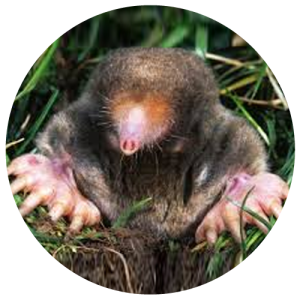
Mole
Many people mistake mole damage and vole damage. One way to tell the difference is that moles rarely come out from under the grass. They “swim” through the soil with their powerful front feet chasing worms, grubs and beetle larvae. This lifts the grass roots from the soil and if it is not pushed back down, the grass will turn brown because it can’t get water. There are poisons for moles. However, since it can be dug up by dogs and cats we highly discourage it’s use. There are many different styles of traps for moles, but we have had great success with the spike style traps. Used correctly, they are very efficient.

Vole
Voles, also called meadow mice eat plant roots. One of their favorite foods is hasta. If you are growing hastas, (especially if you live in a wooded area) be prepared to lose some hastas. Many customers have reported watching their hastas being pulled into the ground by the roots, just like watching Bugs Bunny pulling carrots on the cartoons! Oriental trees are also subject to root damage. The voles will eat the roots until the only thing holding the tree in place is gravity. In the yard, you can often see what looks like a mouse hole with trails snaking through the grass. Unlike mole damage, vole damage is on the surface. The grass is clipped off around the entrance of the hole.
Squirrels
Grey Squirrel
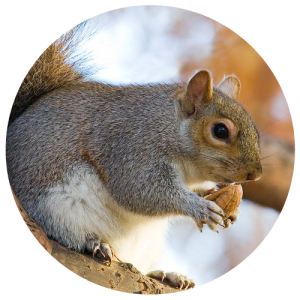
The eastern grey squirrel is one of the most common nuisance animals in the Northern VA area. They typically have 2 litters of babies per year, the first babies are normally born as early as the beginning of February and as late as mid to late April. In late summer they mate again and begin having babies again from August through the middle of October. The babies can be very difficult to find, but if the mother is taken away and the babies are not found, they will quickly die of starvation and then can be found only by the odor. We are very dilligent and rarely miss finding and removing baby animals.
Opossums (Possums)
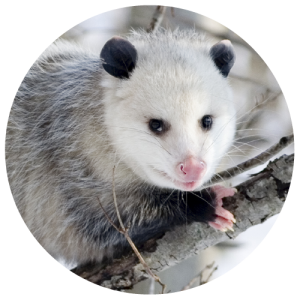
The Virginia opossum is the only North American marsupial. When possum babies are born, they crawl into their mother’s pouch, latch onto a nipple and hang on until they are big enough to start coming out on their own and are weaned after about 3 to 4 months. As many as 15 babies CAN live in the pouch (I have seen as many as 13). Once the babies start venturing out, they still cling to mother for protection.
Opossums most often are found under porches or in wood piles, but occasionally find their way into attics also.
Skunks
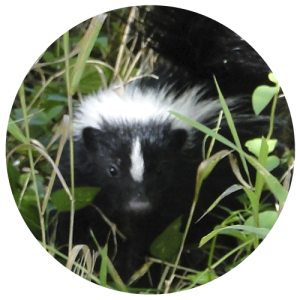
Skunks are very good diggers and will not hesitate to dig under a stoop, deck or backyard shed. In the fall skunks (and raccoons) will dig large areas of a yard in search of grubs just under the grass.
Since skunks eat almost everything a cat does, anyone leaving catfood outside is inviting a skunk to be their house guest!
Contrary to popular belief, skunks won’t just spray anything that gets close. In 8 years of dealing with skunks, I have never been sprayed. Some skunks take more time to get used to people, but as long as you are quiet, and make slow, deliberate movements, a trapped skunk will generally stay to one end of the trap.
In Fairfax county, there are high concentrations of skunks around Mount Vernon, Fairfax Station and Clifton, but they can be found in most areas of the county.

This yard was 2 streets over from Mount Vernon High School. There were 4 skunks here, a mother and her 3 young ones
Snakes
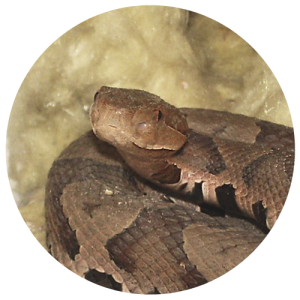
Snakes are generally shy animals who want nothing to do with people. They can be beneficial because they eat mice, slugs, grubs, insects, and other pests and they can be food for other wildlife such as hawks. Although most species of snakes in North America are harmless, there are some venomous species that can pose risks to people and pets. The National Pesticide Information Center collected the resources below to help you find ways to keep snakes away without posing unnecessary risks to you, your family, pets, or the environment.
– If you or someone else is bitten by a snake that you think could be venomous, contact your Poison Control Center (1-800-222-1222) or your health care provider as soon as possible. It may not be necessary to identify the snake.
– If your pet is bitten and is experiencing pain, redness, swelling, or bruising, take your pet to your veterinarian right away. If your pet is not showing any of these signs, consider calling your veterinarian or the National Animal Poison Control Center at 1-800-426-4435 for advice.
